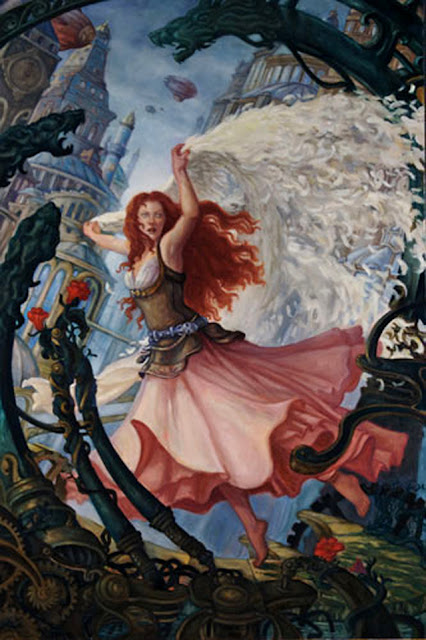Today I have a guest post over at the SurLaLune blog. It's about how the new NBC show, Smash*, made good and fun use of Red Riding Hood in a recent "heading for Broadway" number.
One thing I didn't mention is how apropos the show header (above) is with regard to the concept. All those peeks of red in the garments against wolf-gray say a lot about the show and the characters. I'm sure it wasn't intentional. It was simply meant to be eye-catching but it also suggests to me how deeply the ideas in Red Riding Hood run in our culture. You'll see what I mean more clearly when you read the lyrics to the song too.
You can read my post Little Red Riding Hood Gets "Smash"ed HERE.
Sincere thanks to Heidi for both giving me the opportunity to post on her blog and for fixing the initial formatting issues that cropped up in the sending of the material. We're wishing her every success and all the resources she needs for her new fairy tale database project. The SurLaLune Fairy Tales website is without doubt the best, most user-friendly fairy tale resource and student/enthusiast aid online and gets better and better with every tale and resource added. I can't wait to see how Heidi's new database works!
*Smash is on NBC on Monday nights and all the full episodes are currently available for viewing online HERE (click on the "Video" tab on the site).
One thing I didn't mention is how apropos the show header (above) is with regard to the concept. All those peeks of red in the garments against wolf-gray say a lot about the show and the characters. I'm sure it wasn't intentional. It was simply meant to be eye-catching but it also suggests to me how deeply the ideas in Red Riding Hood run in our culture. You'll see what I mean more clearly when you read the lyrics to the song too.
You can read my post Little Red Riding Hood Gets "Smash"ed HERE.
Sincere thanks to Heidi for both giving me the opportunity to post on her blog and for fixing the initial formatting issues that cropped up in the sending of the material. We're wishing her every success and all the resources she needs for her new fairy tale database project. The SurLaLune Fairy Tales website is without doubt the best, most user-friendly fairy tale resource and student/enthusiast aid online and gets better and better with every tale and resource added. I can't wait to see how Heidi's new database works!
*Smash is on NBC on Monday nights and all the full episodes are currently available for viewing online HERE (click on the "Video" tab on the site).







































